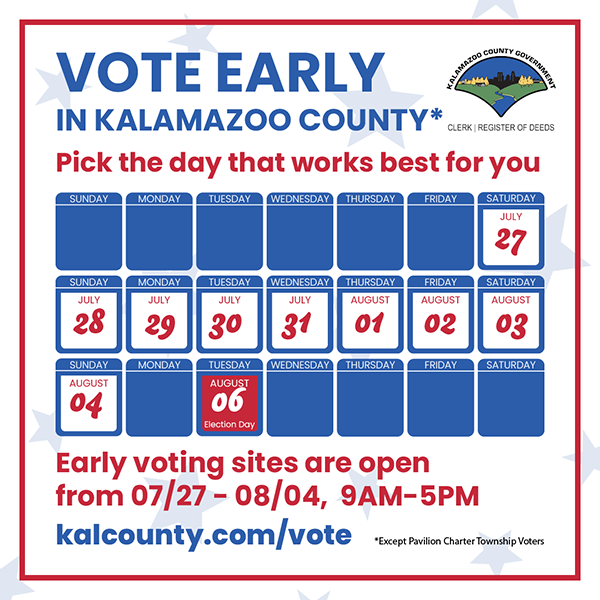 “The schools must not be blamed for the many failed housing policies that are responsible for concentrated poverty.” ISAAC sent this letter to our state leaders on February 14, in response to the state’s announcement that two of our elementary schools, Washington and Woodward, were recommended for closure:
“The schools must not be blamed for the many failed housing policies that are responsible for concentrated poverty.” ISAAC sent this letter to our state leaders on February 14, in response to the state’s announcement that two of our elementary schools, Washington and Woodward, were recommended for closure:
Governor Snyder, Senator O’Brien, Rep. Hoadley, Rep. Iden, and Officer Baker:
We are very distressed about the School Reform Office recommendation to close low-performing schools in Kalamazoo and elsewhere in Michigan, and we are grateful to you for considering the context of those schools’ struggles. Please consider these important aspects of their context in your deliberations.
Federal housing policy is largely responsible for creating segregation and the concentrated poverty that surrounds most low-performing schools.
As you know, the Mackinac Center stresses the “context” of a school: “Controlling for differences in the socioeconomic status of the students each school serves provides a more accurate assessment of a school’s performance, since research has shown that student backgrounds can have a large impact on academic performance.” – Mackinac Center, Michigan Public Elementary and Middle School Context and Performance Database
Those wide differences in students’ socioeconomic status have been maintained by federal housing policies:
[su_list icon=”icon: check” icon_color=”#9602ca”]- The GI Bill offered low-cost mortgages in brand new suburban developments to the GIs returning from WWII, but only to the white GIs. GIs who were African American were not welcome in those new suburbs, so they couldn’t get the wealth-building opportunity of a new house with a low down-payment 30-year mortgage. – Race: The Power of an Illusion – Episode 3: The House We Live In (PBS Documentary)
- Redlining was instituted by the Federal Housing Administration in 1934, drawing red lines on the map around neighborhoods with a high percentage of people of color. “Otherwise celebrated for making homeownership accessible to white people by guaranteeing their loans, the FHA explicitly refused to back loans to black people or even other people who lived near black people.” – The Atlantic, “The Racist Policy That Made Your Neighborhood” May 22, 2014
- Block-busting became common practice when restrictive covenants became illegal. “Mortgage brokers who had previously served as the gatekeepers of racial segregation became profiteering agents of racial transition.” – The Atlantic, “How Real Estate Brokers Can Profit from Racial Tipping Points” March 3, 2015. As new neighborhoods opened up to African Americans with the means to buy at inflated prices, even more deeply concentrated poverty resulted in the neighborhoods they left behind.
- Though the Fair Housing Act ended redlining in 1968, “It is, however, a reality that historic redlining makes homeownership beyond reach for many families in these communities today, regardless of how big banks behave now. If your family was denied a mortgage in the 1930s, or the 1950s, or the 1970s, then you may not have the family wealth or down payment help to become a homeowner today. In that way, the consequences of past redlining transcend time, even as new forms of it continue.” –The Washington Post, “Redlining: Still a Thing” May 28, 2015
We, the Leadership Board of ISAAC, are in full support of the enclosed Kalamazoo County Board of Commissioners’ unanimous “Resolution in Support of Kalamazoo Public Schools and Local Control of Schools.”
We want to stress, in addition, that if they serve students from neighborhoods with concentrated poverty, low-performing schools in Kalamazoo and the rest of Michigan deserve extra resources beyond those allocated to other schools. The schools must not be blamed for the many failed housing policies that are responsible for concentrated poverty. These schools need, instead, extra resources in order for us to have equity in education for all our students in Michigan.
Yours in faith,
Dr. Charlae Davis, Executive Director
Rev. Douglas King, President
Rabbi Matt Zerwehk
VP for Leadership Development
Ms. Tobi Hanna-Davies
VP for Communication
Dr. Rochelle Habeck
Early Childhood & Education Co-chair
Dr. Regena Nelson
Early Childhood & Education Co-chair
Approved at the ISAAC Leadership Board by the vote of 24 Representatives of Member Congregations and Organizations, on February 14, 2017
ISAAC – an interfaith organizing network of congregations and strategic partners working together to build a more just community
 ISAAC
ISAAC





 Ed Genesis is an artist, poet, musician, organizer, entrepreneur, and community leader. Born and raised in Gary, Indiana and moved to Kalamazoo, Michigan permanently in his early 20’s, his love of art/music, his passion for his people and community, and his gift of creativity are evident in all areas of his work. In October 2018 Ed Genesis released a song to accompany the campaign he was working on around school push out, entitled Junior High, which was distributed nationwide including on his own iHeart radio station, Spotify, and iTunes.
Ed Genesis is an artist, poet, musician, organizer, entrepreneur, and community leader. Born and raised in Gary, Indiana and moved to Kalamazoo, Michigan permanently in his early 20’s, his love of art/music, his passion for his people and community, and his gift of creativity are evident in all areas of his work. In October 2018 Ed Genesis released a song to accompany the campaign he was working on around school push out, entitled Junior High, which was distributed nationwide including on his own iHeart radio station, Spotify, and iTunes.